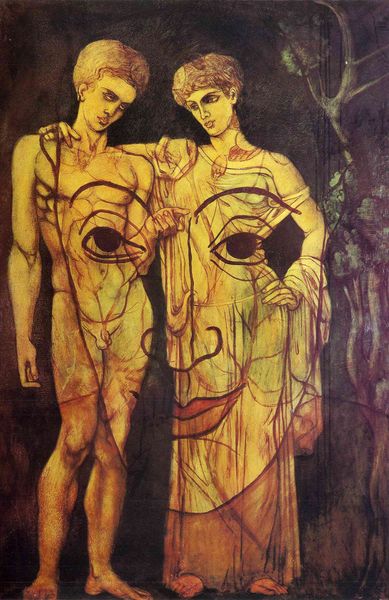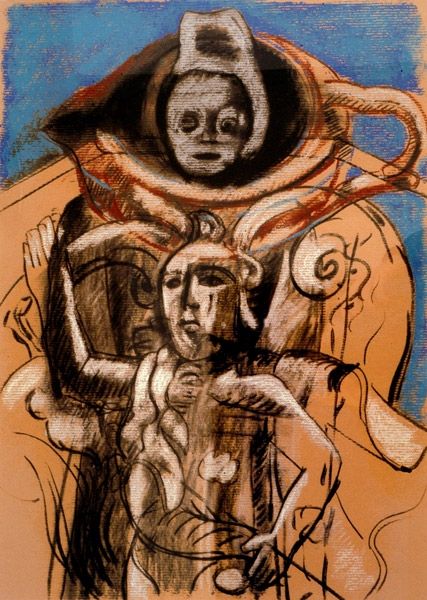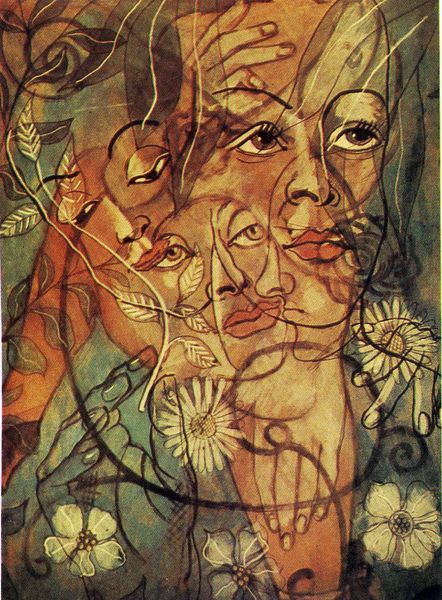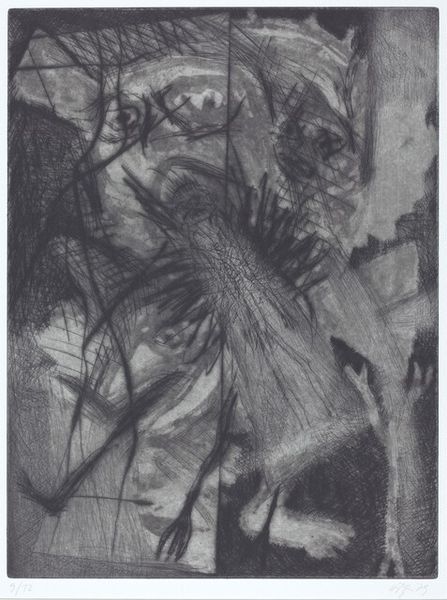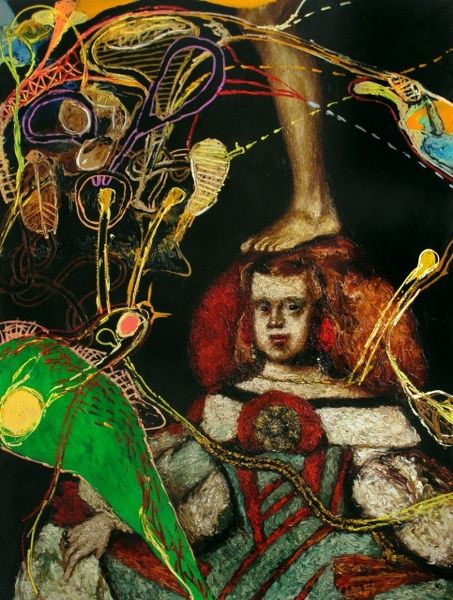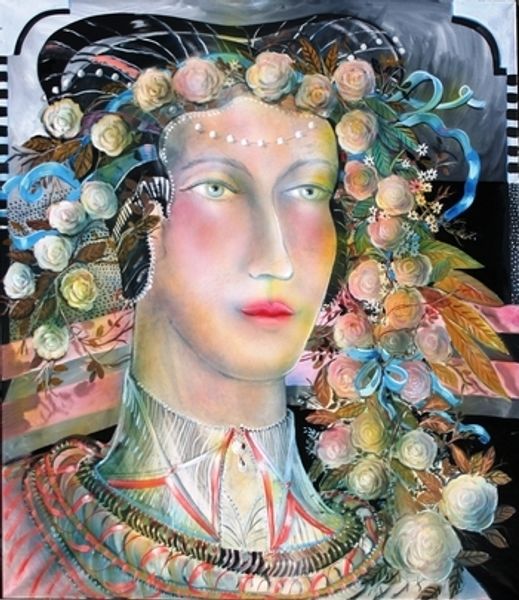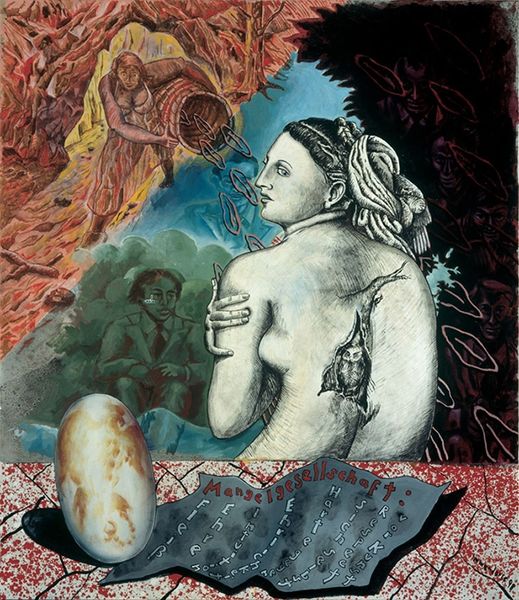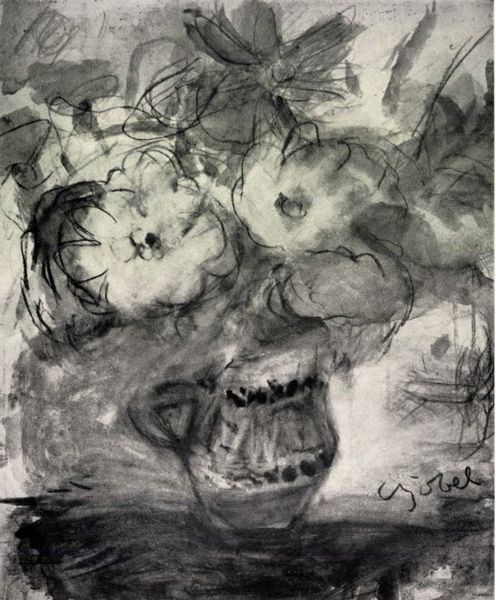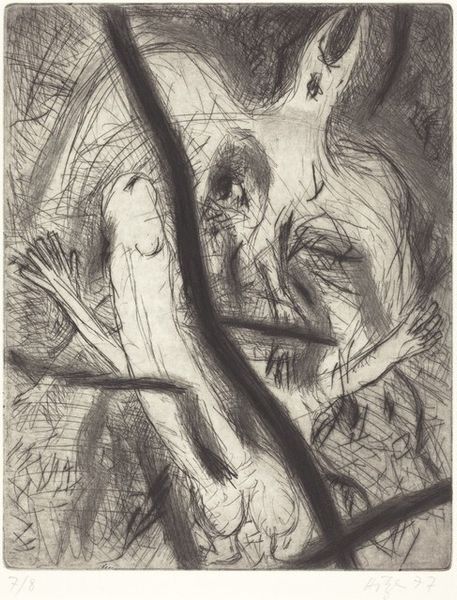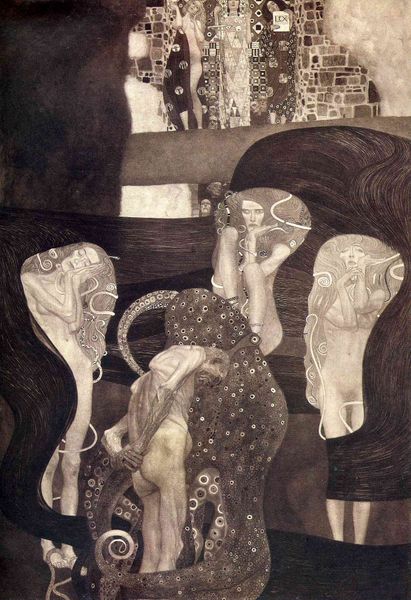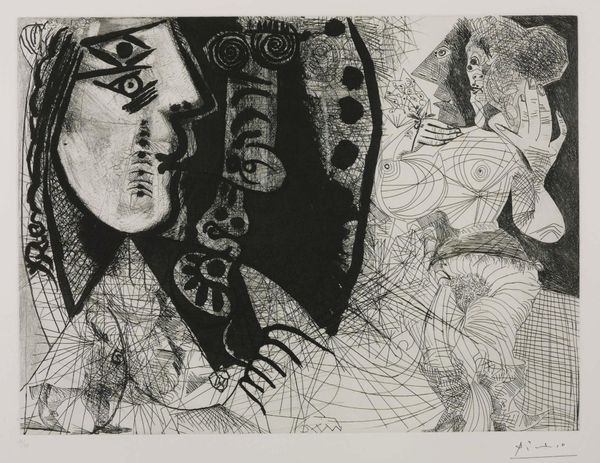
drawing, paper, ink
#
portrait
#
drawing
#
allegories
#
self-portrait
#
allegory
#
figuration
#
paper
#
female-nude
#
ink
#
surrealism
#
portrait drawing
#
history-painting
#
surrealism
#
monochrome
Copyright: Ernst Fuchs,Fair Use
Curator: Ernst Fuchs created this allegorical self-portrait in 1947, titling it “The Lamentation of the Ambivalent”. It is an ink drawing on paper. Editor: My initial reaction is… unsettling. There’s a stark contrast between the almost Renaissance-like face on the left, and the grotesque, almost nightmarish figure beside it. Curator: Fuchs, after the Second World War, engaged heavily with surrealism, finding in it a fitting language for the shattered psyche of Europe. One could interpret that grotesque figure as a symbol of post-war trauma, internalized and looming. His self-portrait offers insight into the psychology of post-war Europe and the place of religion within the social dynamics of the era. Editor: I see it as more personal. The “ambivalent” in the title suggests an internal conflict, doesn't it? Perhaps the two figures are facets of Fuchs himself: the idealized self, and the shadow self, ravaged by experience, forced to confront the darker aspects of humanity. The background figures, the almost goddess-like forms seem like the before- and after images that were also prevalent during WWII, offering different social positions. Curator: It's important to contextualize this piece within the artistic landscape of post-war Vienna. The art world struggled to rebuild, to redefine its role in a society grappling with guilt and loss. Fuchs and his contemporaries searched for meaning and representation through art, often engaging in complex philosophical, mystical, and psychoanalytic terms. Editor: Absolutely, and it feels inherently political, even without overt references. It seems he suggests how society has become more ambivalent over time and, in this way, history has painted this ambivalence to society's detriment, influencing Fuchs in an internal battle to determine society’s position with itself. Curator: Do you think its impact lies in confronting audiences to contemplate our inherent human ambivalence in all of these areas, and the ways it affects all sectors? Editor: Definitely. In many ways, it shows the struggles we often have in making certain changes to improve society over all—something everyone struggles with daily. It invites discussion about confronting difficult emotions, self-acceptance, and challenging the constructs and experiences we create both externally and internally. Curator: Indeed. It challenges the viewer to confront the fragmented nature of self and society, the complexities inherent in moral judgement, and to recognize both the beautiful and monstrous within. Editor: Precisely, offering, therefore, the viewers many perspectives.
Comments
No comments
Be the first to comment and join the conversation on the ultimate creative platform.
